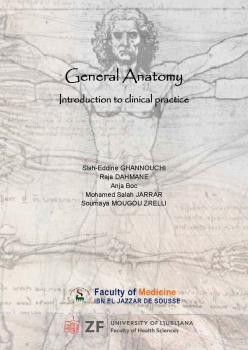General Anatomy: Introduction to clinical practice
Keywords:
human anatomy, organs, scienceSynopsis
Human anatomy is a morphological science which studies the forms and structures of the human body. Anatomical knowledge is essential and therefore obligatory part of health sciences. Anatomy unjustly bears a reputation of a difficult subject at the level of understanding, but especially at the level of memorising concepts that are new to young students beginning their study. Anatomy can be associated with several adjectives. One speaks of general, descriptive, topographical, artistic, functional anatomy, etc. The goal is always the same; namely, a good knowledge of the human body structure. The difference is only in the approach, depending on the objective. Besides mastering the insight into the human body structure, anatomy begins to teach the future doctors the art of description which will be useful in their daily practice.
Chapters
-
Chapter 1 - Introduction
-
Chapter 2 - Musculoskeletal system
-
Chapter 3 - Nervous system
-
Chapter 4 - Sense organs
-
Chapter 5 - Cardiovascular system and lymphoid organs
-
Chapter 6 - Respiratory system
-
Chapter 7 - Digestive system
-
Chapter 8 – Endocrine system
-
Chapter 9 - Urinary system
-
Chapter 10 - Genital system
Downloads

Downloads
Published
License

This work is licensed under a Creative Commons Attribution-ShareAlike 4.0 International License.

